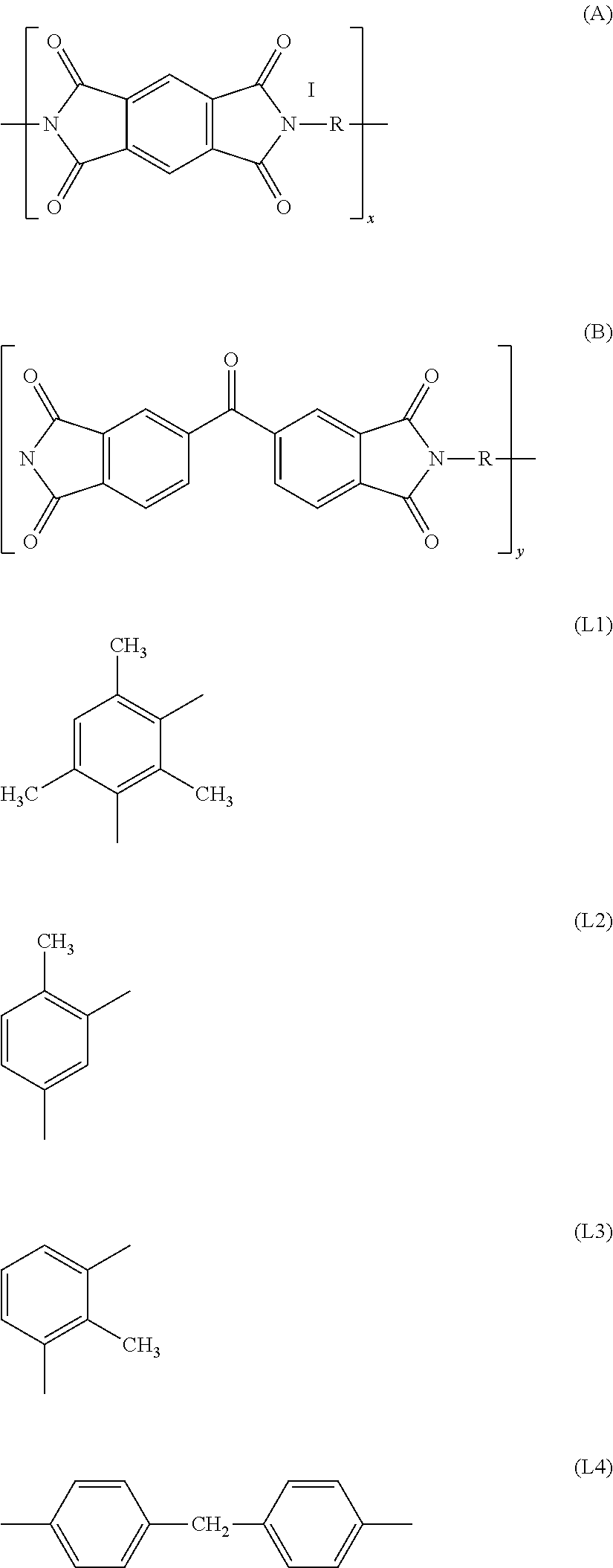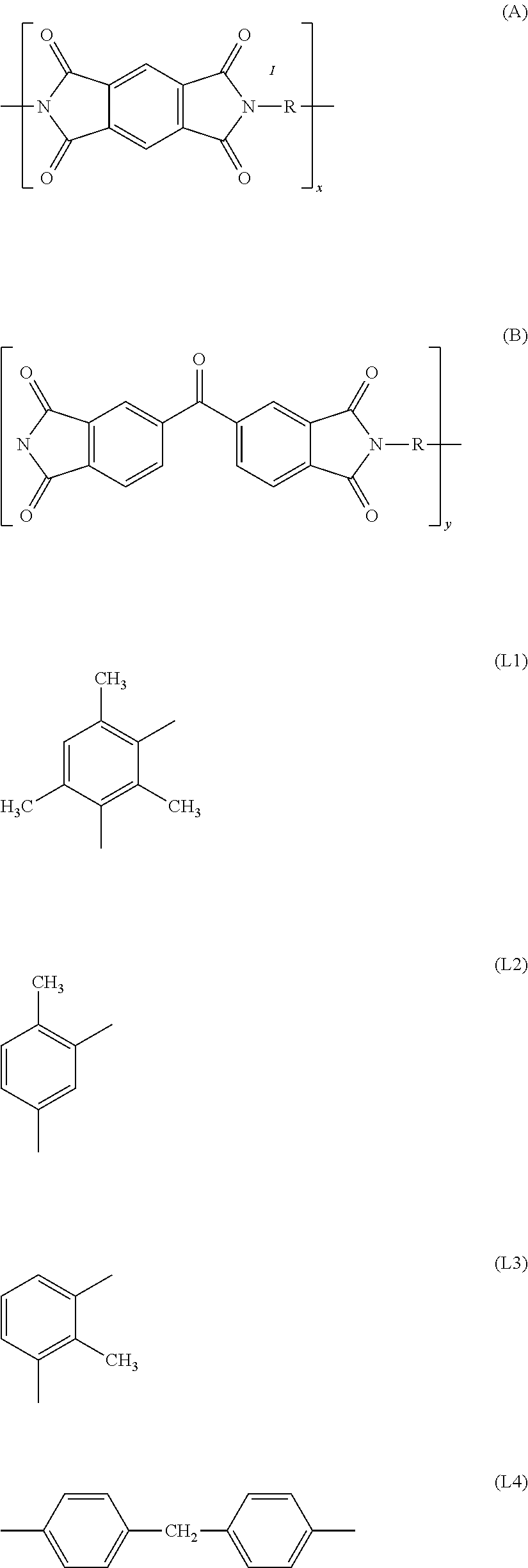Method for producing polyimide membranes
a polyimide membrane and polymer technology, applied in the field of polyimide membranes, can solve the problems of poor separation properties, high cost, and high cost, and achieve the effect of uniform production of polymer membranes only with great difficulty
- Summary
- Abstract
- Description
- Claims
- Application Information
AI Technical Summary
Benefits of technology
Problems solved by technology
Method used
Image
Examples
production examples
[0153]The examples which follow serve to provide more particular elucidation and better understanding of the present invention, but do not limit it in any way.
example 1
[0154]To produce the spinning solution, a 3 l glass flask equipped with a stirrer and reflux condensers was initially charged with 1800 g of anhydrous dimethylformamide. 316.4 g of 3,3′,4,4′-benzophenonetetracarboxylic dianhydride and 142.8 g of pyromellitic dianhydride were dissolved therein and the solution was heated to 80° C. 1.8 g of diazabicyclooctane were added to this solution. Under nitrogen, 283.4 g of a mixture of 80% 2,4-tolylene diisocyanate and 20% 2,6-tolylene diisocyanate are metered in during several hours. In the process, CO2 escaped as a by-product and a polyimide is obtained directly in solution.
[0155]The resultant 27% by weight spinning solution in DMF was then devolatilized, thermostated to 50° C. and gear pumped through a two-material die. The flow rate was 324 g / h. While the polymer solution was conveyed in the outer region of the two-material die, a mixture of 70% dimethylformamide and 30% of water was conveyed as bore solution in the inner region in order t...
example 2
[0159]To further illustrate the effect of the annealing temperature, several membranes were again produced as per Inventive Example 1. However, the heating rate used in the anneal was raised to 5° C. / min. The membranes were heated under an N2 atmosphere having an O2 content of 0.001% by volume, to temperatures of 290 to 320° C. The membranes obtained were tested for DMF solubility, CO2 permeance, CO2 / CH4 selectivity and mechanical properties, the results being summarized in Table 3.
TABLE 3Final temperatureDMFCO2CO2 / CH4(° C.)solubility (%)permeance (GPU)selectivityunannealed100~5003009041.463.93107029.087.83204020.175.6
[0160]It transpired that the anneal had a distinctly enhancing effect on the selectivity, compared with the unannealed membranes. Permeance is very good in all examples. DMF solubility and hence chemical resistance can likewise be controlled via the choice of annealing temperature without having to incur any significant reduction in selectivity. Mechanical properties w...
PUM
| Property | Measurement | Unit |
|---|---|---|
| glass transition temperature | aaaaa | aaaaa |
| glass transition temperature | aaaaa | aaaaa |
| glass transition temperature | aaaaa | aaaaa |
Abstract
Description
Claims
Application Information
 Login to View More
Login to View More - R&D
- Intellectual Property
- Life Sciences
- Materials
- Tech Scout
- Unparalleled Data Quality
- Higher Quality Content
- 60% Fewer Hallucinations
Browse by: Latest US Patents, China's latest patents, Technical Efficacy Thesaurus, Application Domain, Technology Topic, Popular Technical Reports.
© 2025 PatSnap. All rights reserved.Legal|Privacy policy|Modern Slavery Act Transparency Statement|Sitemap|About US| Contact US: help@patsnap.com



